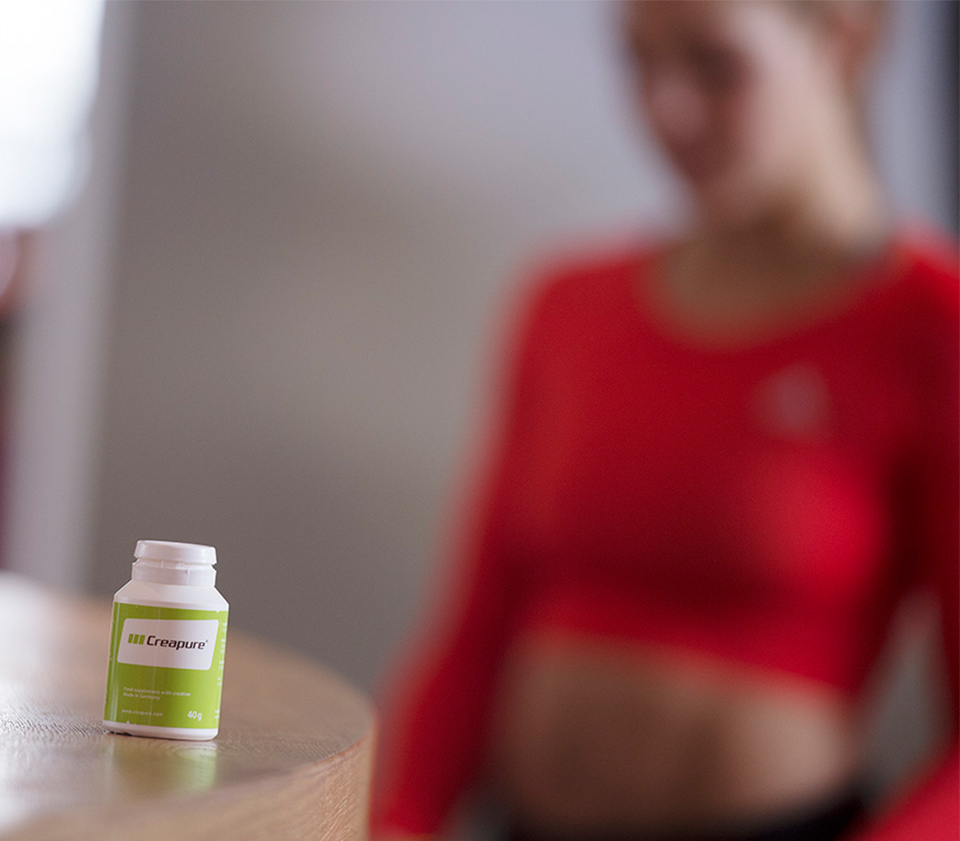Muscles need energy
About 90 percent of the body’s creatine deposits are stored in the skeletal muscle. All living cells need energy. More than any other cells, muscle cells require large amounts of energy when in active use. Creatine helps make this energy more readily available.
How do muscles gain the additional energy?
In the case of short, intense exercises such as sprinting, muscles need lots of energy in the shortest possible time. At the beginning of any such anaerobic exercise (independent of oxygen), the muscles rely on energy sources that are immediately available. These exist in the form of adenosine triphosphate (ATP) and creatine phosphate.
ATP and creatine phosphate act as energy depots (i.e., a kind of battery). They help bridge the time until the biodegradation of glucose (glycolysis), glycogen (glycogenolysis) and fat (lipolysis and fatty acid oxidation) release further energy into the body.
How is energy released into the muscle?
ATP is the energy needed for all biological processes. The ATP molecule has three phosphate groups. If ATP breaks down a phosphate group, the energy released enables muscle function. What remains is adenosine diphosphate (ADP), which the body converts back to ATP using energy present in food. However, this process takes longer and only produces enough ATP to last for a few seconds. The body can therefore regenerate ATP levels more quickly if the muscle performance required is longer and more intense.
How can creatine support muscle movement?
When a muscle is at rest, about two-thirds of its creatine capacity is available in the form of energy-rich creatine phosphate, which contains an additional phosphate group. Even before the hard-working muscles run low on ATP, the enzyme creatine kinase (CK) transfers this phosphate group to ADP and converts it back to ATP – but only as long as sufficient levels of phosphocreatine are present. This allows the muscles to work anaerobically until the supply of creatine phosphate becomes scarce. During the next resting phase, the creatine that was created is converted to creatine phosphate by the addition of a phosphate group. Once the supply of creatine phosphate has returned to its initial levels, it is then able to provide ATP during the next round of intense physical activity.
What does creatine do?
Creatine is an ideal nutritional supplement for athletes because it promotes the transmission of energy within the cell structure in the form of creatine phosphate. The storage of creatine phosphate in muscular cells can be increased through supplementation with creatine. This improves performance during periods of intense muscle use, which results in increased muscle growth and greater strength. The larger creatine phosphate pool also leads to a faster regeneration of ATP and therefore helps recovery after intensive exercise – at both the amateur and competitive level.


